The Business Research Company reported that the industrial mold market size is expected to grow to $7.18 billion in 2029 at a compound annual growth rate of 6.9%. With the growth of the plastic injection molding industry comes with it the need for the best molds. Moreover, the growth in the forecast period can be attributed to advanced materials and alloys, sustainability and eco-friendly molding, precision mold design and simulation, global shifts in manufacturing hubs, and high-performance aerospace materials.
The mold determines the appearance and quality of the finished product in injection molding. Selecting the right mold for injection molding is the key to producing high-quality, cost-effective plastic parts with precision and efficiency.
Injection molding is a popular method for producing plastic parts. The manufacturing process uses a mold to create parts by injecting molten plastic material. From automotive components to medical devices and consumer goods, plastic injection molding is essential for creating durable and consistent products.
The quality of the final product depends heavily on the type of mold used in the process. Selecting the right mold ensures high production efficiency, minimal defects, and cost-effectiveness.
This guide will help you understand the different types of molds available, the key factors to consider when choosing one, and how to ensure the best results for your injection molding projects.
Table of Contents
ToggleWhat Are Injection Molding Molds?
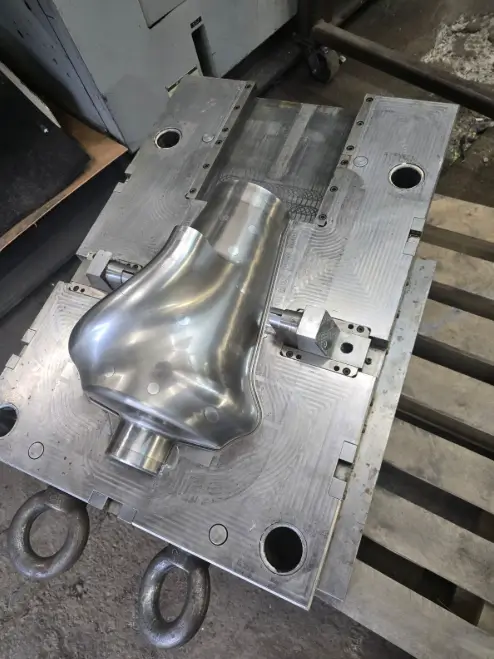
Injection molding molds are precision-engineered tools used to form and shape molten plastic into desired creations. The mold is made up of various components. These components, including the mold cavity, core, and gate and runner system, work together to achieve the overall quality production of injection molded parts. The plastic injection mold consists of the following parts:
Mold Cavity
A mold cavity is a gap that serves as the space that shapes the outer part of a plastic product in an injection molding mold. The mold is made of two halves and the cavity is one of these halves. The other half is the core. The core and cavity make up the mold.
The mold cavity is a critical component where the molten plastic flows and takes shape, defining the external features of the part. It is meticulously designed to ensure the final product meets the required specifications and dimensions. The quality of the mold cavity directly influences the surface finish and accuracy of the molded parts, making it a vital aspect of the mold design.
Core
The other half of the mold is the mold core. The holes or craters are formed through the mold core. Because of the core, the inside features are shaped through the help of the mold cavity to complete the desired shape and structure of the molded product. You would just imagine how crucial that the core have the perfect design to ensure that the inside features will mirror each produced part.
Gate and Runner System
The gate and runners system is the funnel that carries the plastic material into the mold cavities. This channeling ensures even distribution to minimize waste during the injection process. The gate and runners system is crucial for maintaining the efficiency and cost-effectiveness of the injection molding machine process. Achieving the perfect design can significantly impact the cycle time, material usage, and overall quality of the molded parts.
Why Molds Are Important
Molds are the backbone of the injection molding process, playing a critical role in determining the quality, efficiency, and cost-effectiveness of the final product. They are intricately designed to withstand high injection pressure and the intense heat generated during the molding process.
The precise engineering of molds ensures that each molded part meets narrow dimensional tolerances and adheres to the required specifications consistently, even as the injection molding process is repeated to fulfill large production volumes. From bottle caps to water storage tanks, you will be needing a mold to create them.
Directly Influence the Final Product
The injection molding process is directly influenced by the injection mold design, as they dictate the shape and design of the final product. Injection molding cannot be done without it. Molds are designed to surpass high injection pressure and the heat that the machine gives out during the molding process. It is necessary that molds are made from highly repeatable materials crafted with precision. The mold’s shape should meet the narrow dimensional tolerances and required specifications with consistency as the injection molding process is repeated to meet the total needed production volume.
The overall quality of the injection-molded part is also dependent on the quality of the mold material. The choice of mold materials, such as pre-hardened steel molds, hardened steel or aluminum, impacts the mold’s durability, lifespan, and production efficiency. Hence, choosing the mold material is also important to ensure everything flows smoothly throughout the process.
Molds Help Determine the Cost of the Final Product
In addition to their functional role, molds also play a significant part in the economic aspect of injection molding. While the initial cost of creating a mold can be substantial, the investment pays off in the long run through efficient production and reduced per-part costs. Custom plastic injection molding projects often require specialized mold designs to accommodate unique product specifications, further highlighting the importance of selecting the right mold for each injection molding project.
Knowing About Molds Can Help Improve Design Decisions
Understanding the intricacies of injection molding molds and their components is crucial for successful outcomes in plastic manufacturing processes. By selecting the appropriate mold design and materials, manufacturers can ensure the production of high-quality, cost-effective plastic parts that meet industry standards and customer expectations.
There are instances, for example, of excess material in a thin layer exceeding normal parts or called flash and burrs. These are small bumps or imperfections that can appear on molded parts. They are both considered defects during injection molding or other plastic molding processes.
Choosing the Right Mold Materials
When it comes to injection mold design, selecting the right material is crucial for ensuring the mold’s durability, performance, and cost-effectiveness.
Types of Molds
Steel Molds
Steel molds, especially those made from hardened steel, are very durable and wear-resistant, making them perfect for high production runs. They can withstand high heat and pressure to ensure reliable performance in the injection molding process.
P20 Steel Molds
P20 is a low alloy tool steel used for plastic injection mold cavities, die-casting dies and tooling. It’s tough and maintains shape stability under high stress. With a hardness of around 300 HBW, P20 is pre-hardened and has good heat treatment properties. It has good thermal conductivity to scatter heat and prevent mold deformation and thermal cracks. It’s also wear-resistant making it a durable choice for plastic injection mold cavities, zinc die-casting dies, and tooling that requires polishing or etching.
Slides or lifters of H-13 steel that are heat treated to Rockwell 50-52 are generally used in P20 steel molds. The heat treatment for P20 includes preheating, austenitizing at high temperatures, quenching, and tempering to enhance its mechanical properties. P20 should be stress-relieved after machining and periodically during service to maintain its performance. This is done by heating the steel to 900ºF (482ºC) and holding it for one hour per inch of thickness. However, P20 is not stainless steel and has low corrosion resistance.
H13 Steel Molds
H13 is a hot work tool steel designed to withstand high temperature and thermal stress, making it suitable for aluminum and zinc die casting, extrusion dies, and injection molding applications. It’s known for its heat resistance, and maintains strength and hardness even at extreme temperatures. It’s also tough and wear-resistant, enduring repeatable industrial applications.
H13 is also machinable and polishable making it a popular choice for hammer dies, hot-extrusion dies, casting dies, hot forging dies, aluminum alloy die-casting molds, and mold cores. To get the most out of H13 steel, preheat the mold before use and temper it after hot working before re-hardening. Surface hardness can be improved through carburizing or nitriding process.H13 is a chromium hot work tool steel, group H in AISI. Very durable, heat resistant and machinable.
Stainless Steel Molds
Stainless steel is an excellent choice for plastic injection molds because of its durability, corrosion resistance and high-volume production capacity. It’s ideal for molding corrosive plastics like PVC, UPVC and POM as it has better rust and chemical resistance capabilities.
Stainless steel molds are highly durable, so for manufacturers who produce large quantities of plastic products, it’s a cost-effective option. Also their being wear resistant can produce hundreds of thousands of units with minimal tooling changes. If a stainless steel mold wears out, it’s easy to remake it, and production will be smooth.
Among the common stainless steel grades used in plastic injection molding, 420 stainless steel is a popular choice for its high corrosion and wear resistance while CSM21 is for high-volume production. Besides stainless steel, other materials like hardened steel are used for high-volume production, and S7 tool steel is used for shock resistance and high temperature.
Aluminum Molds
On the other hand, aluminum molds are favored for their cost-effectiveness and quick turnaround times, making them suitable for low- to medium-volume production and prototyping. These molds allow for faster machining and modifications, which can be advantageous during the initial stages of product development.
Beryllium-Copper Alloys
In areas of the mold which require fast heat removal or the areas that get heated more than the other other parts, berryllium copper is used. Copper alloy inserts are sometimes used in the parts of the mold that require fast heat removal as well. The high-thermal conductivity and good wear resistance of this mold material make it especially expensive but can improve cycle times significantly. For molds with intricate details and high-heat requirements, berryllium-copper alloys are most needed.
Additionally, mixing the available materials with blends of previously developed materials or alloys helps product designers to have more options available.
Hybrid Molds (Steel-Aluminum Combinations)
In addition to steel and aluminum, hybrid molds that combine both materials are also gaining popularity. These molds offer a balanced approach, leveraging the strength of steel in critical areas while using aluminum for sections requiring rapid heat dissipation. This combination enhances the mold’s overall performance and extends its lifespan.
Furthermore, the choice of mold material can significantly impact the precision and quality of the injection molded parts. Precise molds are essential for maintaining narrow dimensional tolerances and ensuring consistent part production. As such, selecting the appropriate material for your specific injection molding task is vital in achieving successful and cost-efficient manufacturing processes.
Key Factors to Consider When Choosing Molds
Material Compatibility
Knowing the compatibility of the mold material with the plastic resin is key to successful injection molding. Different plastics have different melting points, shrinkage rates and chemical properties that can affect the mold. If the mold material can’t withstand the high temperatures of a specific resin, it will deform or wear out prematurely and affect the production process.
Choosing a mold material that matches the plastic properties will keep the mold integrity and the quality of the molded parts. This is especially important in custom plastic injection molding where special plastics are used to meet specific product requirements. By prioritizing material compatibility manufacturers can optimize production, minimize waste and maintain product consistency.
Durability and Longevity
Mold durability and longevity are key to the efficiency and cost of the injection molding process. The material of the mold decides how many high-volume cycles it can withstand. Hardened steel molds are heat treated after machining, are super wear-resistant and can take the injection pressure and heat without compromising performance. They are ideal for long production runs where quality must be consistent.
Aluminum molds are not as durable as steel but are cost-effective for shorter production runs or prototyping phases. They are fast turnaround, so speed is more important than extended life. By evaluating production volume and the specific requirements of an injection molding process, manufacturers can choose a mold material that balances initial investment with long-term benefits and performance throughout its life.
Design Complexity
Custom molds offer ultimate precision and flexibility, perfect for applications that require unique features and tight tolerances. However, they often require a higher upfront cost and longer lead times due to the complexity of design and build.
Standard molds are a more economical and time-efficient solution for producing common parts with consistent dimensions. Their pre-engineered design allows for quicker setup and production, which is suitable for high-volume industries.
Ultimately, the decision between custom and standard mold design should be based on volume, part complexity, budget and long-term manufacturing goals. By weighing these factors, you can choose the right mold design for efficiency, quality and cost.
Precision and Tolerance
Precise molds are key to high-quality plastic injection molded parts. Mold design precision ensures each part meets specifications, consistency, and zero defects throughout production. This is especially important in automotive, aerospace and medical devices industries, where even the slightest dimensional variation can affect performance and safety.
Investing in high-precision molds improves product quality and minimizes material usage, waste and post-production modifications. A well-designed mold allows the plastic to flow smoothly into multiple cavities with no defects like warping, shrinkage or air pockets.
Beyond quality control, precise molds also improve production efficiency through faster cycle times and less downtime. Manufacturers can maximize their resources and boost profitability by eliminating rework and high throughput. If you’re looking to scale injection molding operations, investing in precision-engineered molds is a smart move that pays off in the long run with durability, consistency and customer satisfaction.
Production Volume
The production volume you are targetting for your injection molding process should guide you in choosing the right mold materials. High-volume production requires durable materials. On the other hand, less expensive options are available for low production volume.
Machinability and Cost
Some materials are easier to machine, making them less costly as the manufacturing costs are lesser, too.
Classes of Plastic Injection Molds
An injection molding machine uses different classes of plastic injection molds depending on manufacturing demands. Each class of molds allows for the development of other kinds of steel products. A specific steel type should be compatible with various manufacturing demands.
Plastic injection molds can be divided into different classes, each requiring different types of steel to manufacture products effectively. Each class allows for the development of different kinds of steel products, which means that each steel type must be able to handle various manufacturing demands.
Here are the classes of plastic injection molds used in the plastic injection molding industry.
SPI Mold Classifications
The Plastics Industry Association (formerly the Society of Plastics Industry, SPI) has five mold classifications to standardize quotes and orders for injection molding. These classifications help you choose the right mold for durability, production volume, and application.
Mold Classifications for Injection Molding
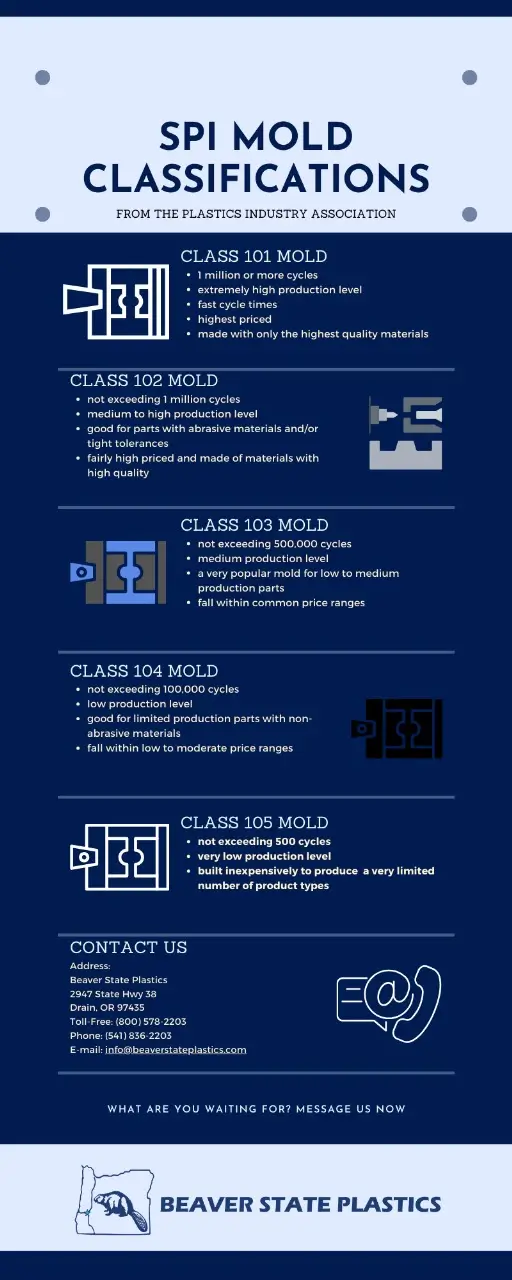
Class 1: Hardened Steel Molds
Class 1 molds are hardened steel molds and are for high-volume production. These can withstand thousands to millions of cycles at high pressure, they are the most durable. High heat resistance means they will maintain their structure even at extreme temperatures during the injection molding process. Hardened steel molds are heat treated after machining. These molds are superior in terms of life span and wear resistance.
Class 2: Hardened Steel Molds
Like Class 1, Class 2 molds are made from hardened steel but slightly less durable. They are good for high-volume production but may have a shorter life than Class 1 molds. They offer a balance of strength and cost, good for demanding applications.
Class 3: Pre-Hardened Steel Molds
Class 3 molds are made from pre-hardened steel, a middle ground between strength and versatility. It is not as hard as Class 1 and 2, but it is still robust for moderate to high volume production. These are used for general-purpose molding and a cost-effective solution without sacrificing performance.
Class 4: General Purpose Steel Molds
Class 4 molds are generally used for base cavities or where extreme durability is not required. These are more affordable, easier to maintain and good for medium to low-volume production.
Class 5: General Purpose Steel Molds
Class 5 molds are the most cost-effective, used for prototyping or low-volume production. Easy to replace and maintain, good for short-term projects where life span is not a concern.
By knowing these mold classifications you can make informed decisions to optimize cost and performance for your injection molding projects.
Choosing the Best Mold Material for Your Application
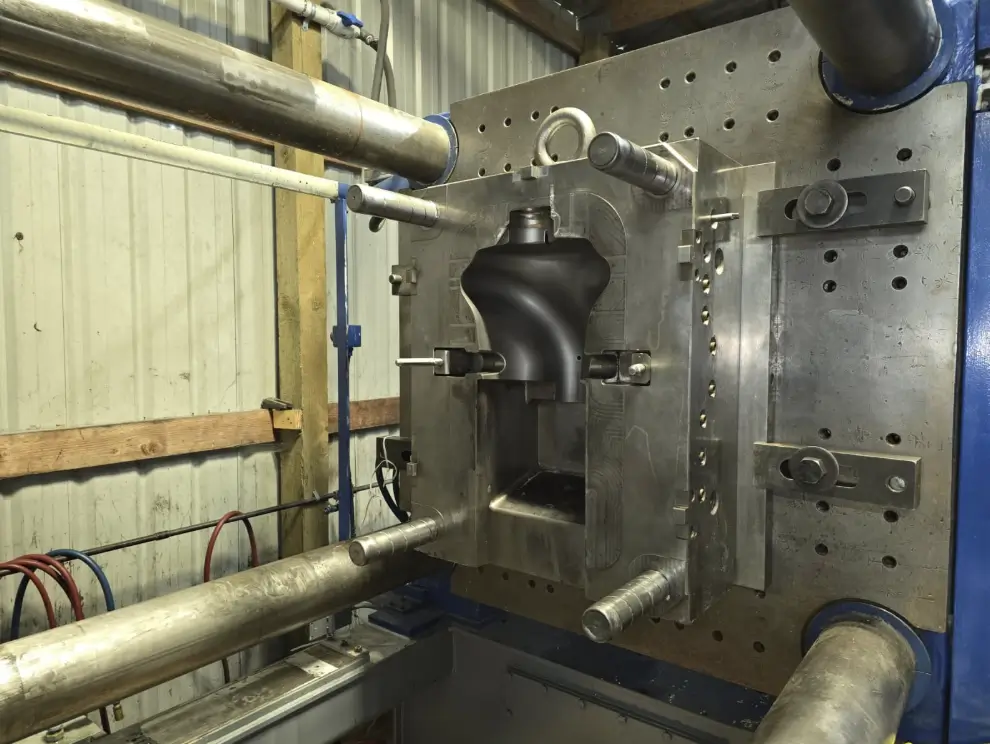
When choosing the best mold material for injection molding services, remember to consider the following:
High-volume production: Opt for H13 or stainless steel for longevity and heat resistance.
Prototype or low-volume production: Aluminum molds are cost-effective and fast to manufacture.
Corrosive or high-temperature plastics: Stainless steel or beryllium-copper alloys ensure durability.
Complex designs with fine details: Beryllium-copper alloys enhance precision and heat dissipation.
Manufacturing Plastic Parts: The Steps and Processes
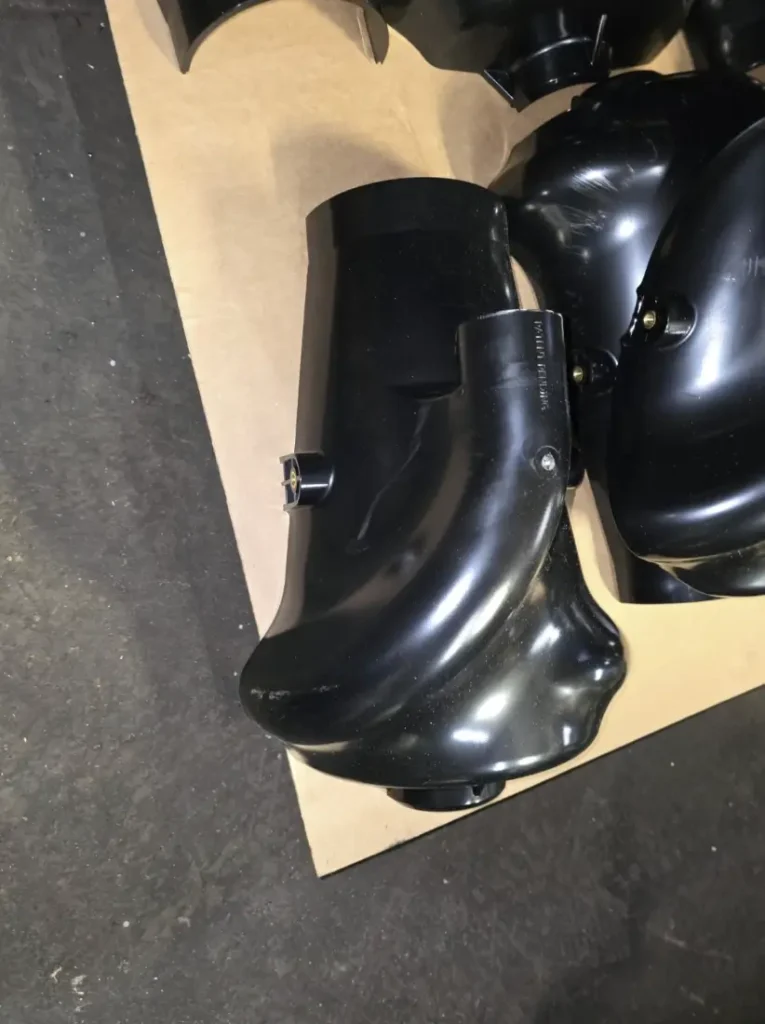
Plastic part manufacturing follows a process which includes designing the part, creating a mold, heating plastic resin, shaping the material, cooling and finalizing the product. The steps may vary depending on the process used, like injection molding, blow molding or thermoforming.
Key Steps in Plastic Part Manufacturing
- Part Design
Develop a 3D CAD model considering functionality, dimensions and material properties. Optimize the design by considering draft angles, wall thickness and potential molding challenges. There are also CAD/CAM software that helps the mold maker be constantly competitive in the industry.
- Mold Design and Build
Design the mold to the exact specifications of the final product. Choose the right mold material based on part complexity and production volume. Build the mold to high precision to ensure consistent part quality.
- Material Selection
Choose a plastic resin that meets the part’s performance requirements, strength, flexibility, heat-resistance and cost.
- Molding Process (Varies by Method)
Injection Molding
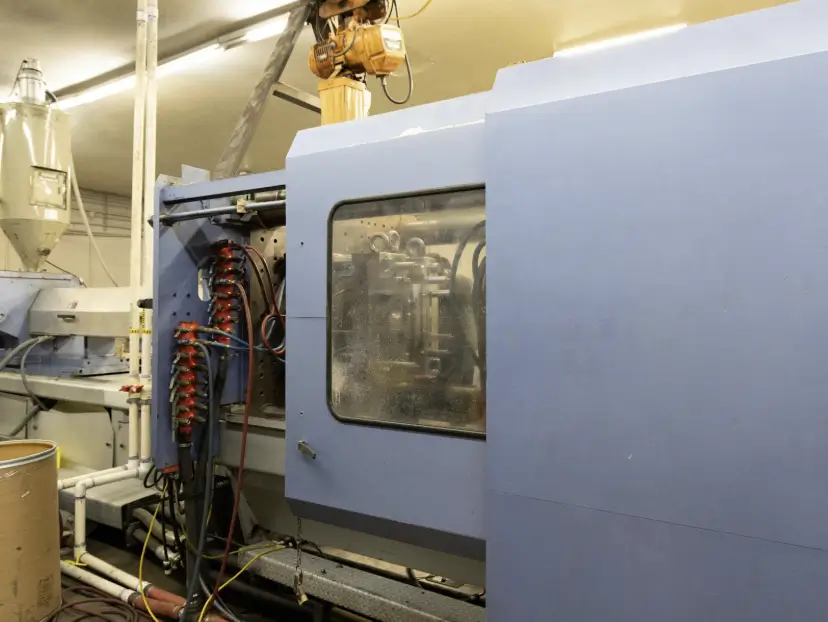
Heat the plastic resin until molten. Inject the molten plastic into the mold cavity under high pressure. The nozzle controls how the molten plastic flows into the mold from the feeding system of the injection molding machine. Let the molten plastic material cool and solidify, then eject the part.
Blow Molding
Form a plastic tube (parison) and enclose it in a mold. Inflate the parison with air, forcing it to conform to the mold shape.
Rotomolding
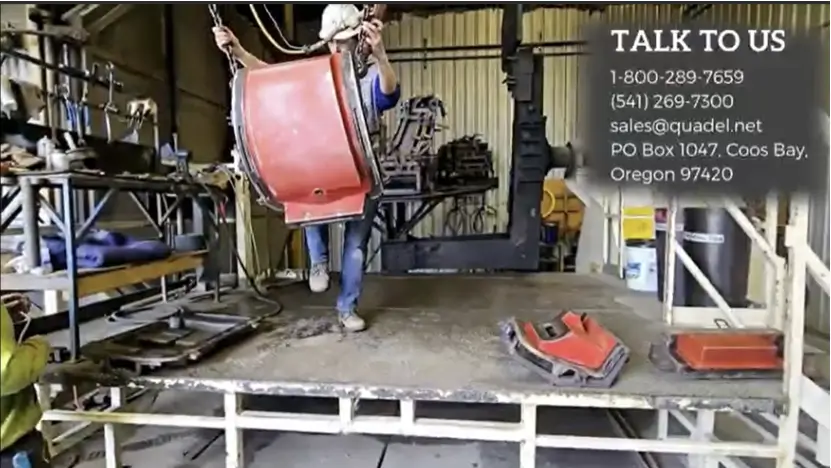
Load plastic resin powder into a mold, which is then heated and rotated on multiple axes. As the plastic melts, it evenly coats the mold’s interior, forming the desired shape. Once cooled, the solidified product is removed, ready for use.
Thermoforming
Heat the plastic sheet until it becomes flexible. Use vacuum pressure to mold the sheet into the desired shape.
5. Quality Control & Inspection
Check for defects such as sink marks, burrs or surface imperfections. Check dimensions to ensure accuracy and compliance with specifications.
6. Post Processing (If Required)
Trim excess material. Paint, finish or add coatings to enhance functionality and aesthetics.
By following these steps, manufacturers can ensure efficient production, high-quality output and cost-effective manufacturing of plastic components across various industries.
Frequently Asked Questions
How Much Does a Mold for Injection Molding Cost

The cost of an injection molding mold can vary significantly, from a few hundred bucks for a simple, low volume 3D printed mold to over $100,000 for a high-volume production mold. Several key factors go into mold pricing: part complexity, production volume, mold material, and the number of cavities needed.
Breakdown of Injection Molding Molds
Simple Molds – A basic single cavity mold for a simple part will cost between $1,000 to $5,000.
Complex Molds – Larger multi-cavity molds with lots of details will cost between $25,000 to $50,000 or more.
Key Factors Affecting Mold Costs
- Part Complexity, undercuts, tight tolerances or intricate surface details drive up costs because of the precision required to manufacture.
- Material Selection –High-performance mold materials like hardened steel are more expensive but durable than standard steel.
- Production Volume – Molds for high-volume production require robust construction and advanced features, increasing the cost.
- Number of Cavities – Multi-cavity molds that produce multiple parts at once are more expensive than single cavity molds but more efficient and lower cost per part in mass production.
By understanding these cost factors, manufacturers can make informed decisions when investing in molds and get the right balance between cost, durability and production efficiency.
Is injection molding profitable?
Yes, injection molding can be very profitable, but it depends on several factors such as volume, material cost, mold cost, and market demand. Many industries like automotive, medical, electronics , and consumer goods like bottle caps rely on injection molding because of its cost-efficiency, scalability, and ability to produce high-quality parts with precision.
Key Factors Affecting Profitability
High Initial Investment vs. Long Term ROI
Mold design and tooling costs can range from a few thousand to over $100,000, depending on complexity. Once the mold is made, per unit, production costs drop significantly, making high-volume production very profitable.
Economies of Scale
The more parts you produce, the lower the cost per unit, making it ideal for large-scale production. Multi-cavity molds can increase output and boost profitability.
Material Cost & Waste Reduction
Choosing cost-effective plastic resins without compromising quality improve margins. Recycling excess plastic and optimizing mold design can minimize waste and reduce costs.
Automation & Efficiency
Modern automation and robotics reduce labor cost and increase production speed. Faster cycle time and minimal manual intervention increase profitability.
Market Demand & Niche Specialization
Industries with consistent demand (e.g. medical devices, packaging, automotive parts) offer strong profit potential. Custom or specialized molds command higher price and better margins.
Ongoing Maintenance & Operational Cost
Proper mold maintenance extends mold life and reduces replacement cost. Energy efficient injection molding machines reduce operational cost.
Injection molding is very profitable when production is optimized, waste is minimized, and demand is steady. The key is choosing the right projects, scaling production efficiently, and leveraging automation to maximize returns.
How is mold manufactured?
Mold manufacturing is a complex process that involves designing, machining, and assembling components. The process is often automated using computer-aided design (CAD) and computer-aided manufacturing (CAM) software.
Design
- Engineers use CAD software to create a 3D model of the part to be produced
- The model includes cavities, cores, and ejector systems
- The model considers the thermal and mechanical stresses the mold will undergo
Machining
- Specialized equipment is used to create the cavities and cores required for the final product.
- CNC machining or commonly referred to as Standard Machining, is used to create more complex and accurate molds
- The other method used in mold manufacturing is Electrical Discharge Machining (EDM).
- Electrical discharge machining (EDM) is primarily used when machining extremely hard materials, complex geometries, or intricate features that are difficult or impossible to create with traditional machining methods.
Assembly
- The individual components of the mold are assembled into a complete mold tool
- Components such as the ejector pins, the sprue bushing, and the runner system are attached
What is Electrical Discharge Machining (EDM)?
EDM (Electrical Discharge Machining) is a high precision metal fabrication process that uses controlled electrical sparks to shape metal. Also known as spark machining, wire burning or die sinking EDM is used to create complex parts that other cutting methods can’t.
In Electrical Discharge Machining (EDM), two metal electrodes sit in a dielectric fluid, such as water or oil. An electrical spark is generated between the electrodes, producing intense heat that melts and vaporizes the material, shaping it with precision. Since EDM doesn’t touch the material, it’s precise and eliminates tool wear, perfect for complex and delicate parts.
Electrical Discharge Machining (EDM) is unmatched in precision, so it’s perfect for cutting complex shapes, deep holes and undercuts. It machines hard metals like titanium and tungsten carbide and delivers a finish that doesn’t require secondary polishing.
EDM is used in making molds, dies and intricate metal parts, with fine details without stressing or deforming the material. Non-contact cutting preserves the structure, so it’s invaluable across many industries. In aerospace, EDM is used for turbine blades and fuel system parts, automotive for engine and transmission parts, medical for implants and surgical tools and tool and die makers for stamping dies and injection molds. With its ability to shape the toughest materials with precision, EDM is a critical process in today’s manufacturing.
Final Thoughts: Choose the Right Mold for Success
Your injection mold design project success starts with choosing the right mold. Whether it’s durability, cost or precision you’re looking for, understanding mold types and materials is key to your production process. With the injection molding industry growing rapidly, investing in the best mold means high-quality output, fewer defects, and higher profits.
Don’t leave your success to chance – choose the right mold for you today. Ready to optimize your injection molding process? Get in touch now to talk to us about the perfect mold for your production needs!
